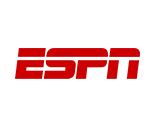Protecting Your Knees During CrossFit and Bodybuilding Activities
With the increased popularity of intense fitness programs and televised ninja-style competitions, people are interested in pushing their limits through extreme exercise.
The thrill of this type of workout is best balanced with the practice of skills that protect the body from injury, as the ultimate goal is to attain lifelong optimal health and wellness. Commitment to a few basic fundamentals can ensure that the excitement of high intensity sports is not sidelined by serious damage to at-risk joints such as the knees, which are highly subject to knee pain when squatting and knee pain after squats.
Stressing the Knees with Modern Workouts
CrossFit and other high intensity workouts offer aggressive “WOD” (Workout of the day) options to keep members engaged and challenged. Once you have mastered the appropriate form and skills and are ready to engage in advanced workouts, alternate them with lower impact cardio options such as elliptical, treadmill, swimming, or spin classes. These intense movements can push your body and your knees to their limits, making it essential that any sort of pain, like knee pain when squatting, is used as an indicator of when to slow down and relax the joint.
Bodybuilding has been around as a fitness option for many decades. Although many people do not desire competition level results, it continues to be a very popular fitness activity as people enjoy pursuing an optimal physique. Appropriate warm-up is essential to prepare the joints for bodybuilding activities. When doing prime weight lifting activities such as squats, it is important to use proper form to prevent knee pain when squatting or pain in other joints such as the shoulders, ankles, and wrists. Learning the basic techniques before accelerating the weight load is important to prevent joint damage such as knee pain after squats. Squats, leg press, shoulder press, dead lifts, and lunges with weights all require use of stabilization and control to manage the movement of the weights while keeping the joints in proper alignment.
The Benefits of an Experienced Trainer
It is well worth the expense to invest in the use of a qualified fitness trainer, especially if you are out of shape or attempting a new, more strenuous workout program. An experienced trainer will assess your current fitness level, review areas of weakness or prior injury, and develop a plan designed to help you reach your fitness goals. When beginning a new exercise regime, speed is not an important factor, at least until the body and joints are warmed up, stretched appropriately, and proper form is developed.






























